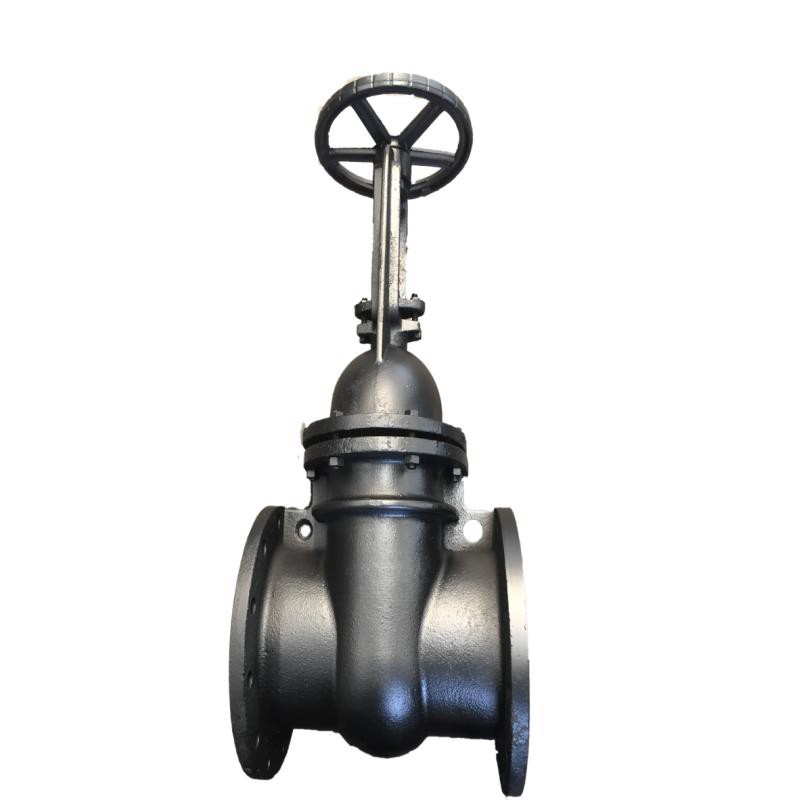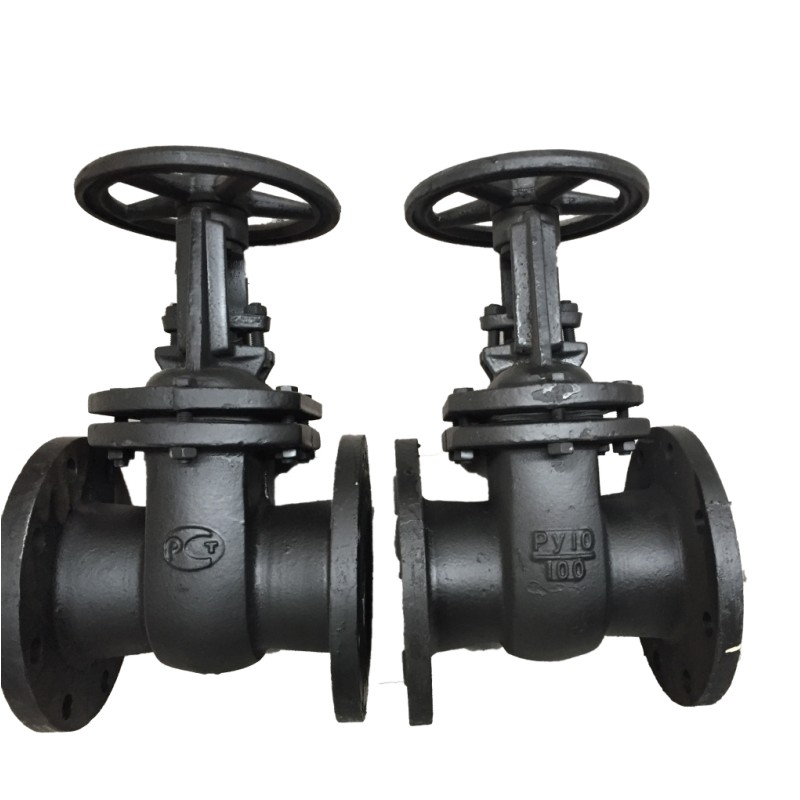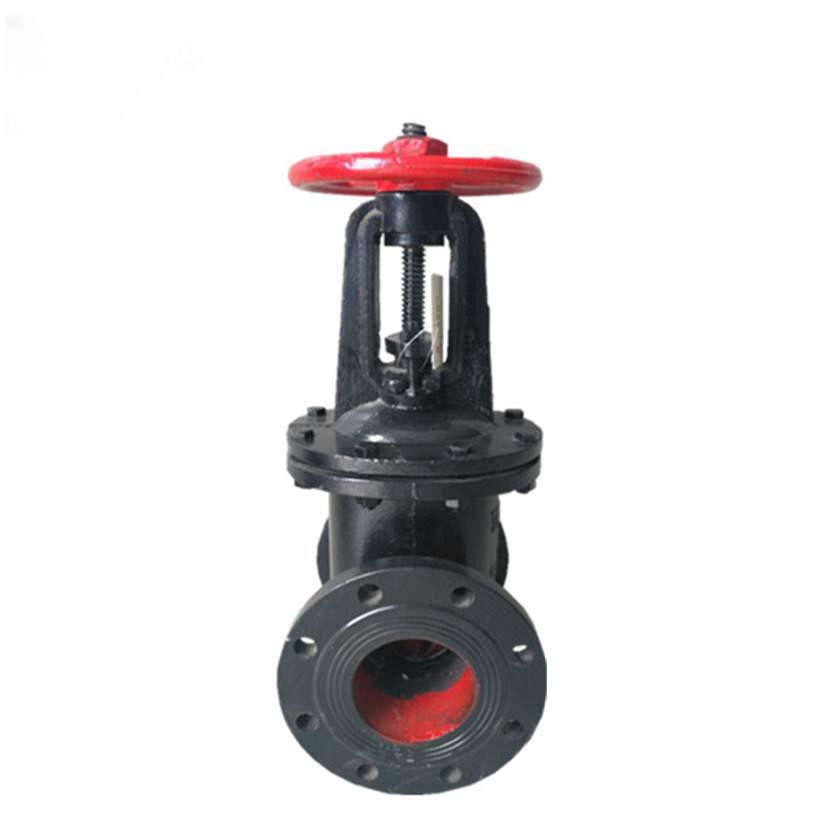Jul . 27, 2025 21:01
Back to list
High-Quality Cast Iron Gate Valve for Reliable Flow Control
Explore in-depth the cast iron gate valve industry with a technical focus on the GOST Cast Iron Gate Valve Z44T-10/Z41T-16, its manufacturing, comparative data, application scenarios, and best practices for selection and customization in modern fluid control.

Typical appearance of a cast iron gate valve - robust, corrosion-resistant, and widely adopted across industries.
1. Industry Overview & Market Trends for Cast Iron Gate Valves
The global cast iron gate valve market is experiencing robust growth, forecasted to reach USD 2.7 billion by 2030 (MRFR Research), primarily driven by industrial expansion in water treatment, petrochemical, and municipal sectors.
- Innovation: Updates in coating, sealing, and actuating technology.
- Key Demand Drivers: Infrastructure upgrades, green energy projects, and aging pipeline networks.
- Regional Hotspots: APAC leads with 37% share, followed by EMEA and North America.
Figure: 10-year global cast iron gate valve demand (thousand units). Data extrapolated from Grand View Research.
2. Technology Deep Dive: Cast Iron Gate Valve Technical Parameters & Materials
2.1 Defining Cast Iron Gate Valves & Their Structure
Cast iron gate valves belong to the family of linear motion valves. Operated via rising/non-rising stems, their gate (disc) moves perpendicularly to the flow direction, offering full-bore fluid passage with minimal pressure loss. The cast iron construction (typically GG25/GJL-250/EN-GJL-250) offers exceptional durability, abrasion resistance, and cost efficiency.
Key Technical Terms:
Key Technical Terms:
- DN (Diameter Nominal): Valve bore size commonly from DN50 to DN600.
- PN (Nominal Pressure): Usual ratings: PN10 (10 bar), PN16, and PN25.
- Sealing Options: Brass, bronze, or EPDM wedge sealing.
- Stem Types: Rising (Z44T) and non-rising (Z41T).
| Parameter | Value Range | Typical Standard |
|---|---|---|
| Body Material | Grey Cast Iron (GG25 / EN-GJL-250) | ISO 1964, DIN EN 1561 |
| Valve Sizes | DN50 – DN600 mm | EN 1171, BS 5163 |
| Pressure Rating | PN10, PN16, PN25 | ISO 7005-2 |
| Face-to-Face | 210-850mm | ISO 5752, EN 558 |
| Testing & Acceptance | Hydrostatic, leakage, shell tests | ISO 5208, API 598 |
| Coating/Finish | Fusion Bonded Epoxy (≥250μm) | WRAS, FDA |
| Operation | Handwheel, Electric, Pneumatic | EN 12266 |
| End Connection | Flanged PN10/16 | EN 1092-2 |
Trends in pressure ratings and valve size distribution based on 2020–2024 installation data.

Section view: internal construction of advanced cast iron valves optimizing sealing and flow characteristics.
2.2 GOST Cast Iron Gate Valve Z44T-10/Z41T-16: Product Overview
The GOST Cast Iron Gate Valve Z44T-10/Z41T-16 is engineered for high-performance in waterworks, municipal, and industrial pipeline applications.
- Standard: GOST 5762-2002 (Russian national standard), compatible with ISO/EN technical requirements.
- Stem Types: Z44T (rising stem), Z41T (non-rising stem); handwheel operation.
- Size Range: DN50 to DN600 mm
- Design Pressure: 1.0 MPa/1.6 MPa (PN10/PN16)
- Body Material: High-grade cast iron (KTZ 30-6, GG25), fully epoxy coated for corrosion resistance.
- Sealing: Rubber-seated wedge with brass/bronze nut, 100% tight shutoff.
- Testing Standard: ISO 5208, GOST 9544, hydro-tested to 1.5 x rated pressure.
Comparison of GOST Z44T-10/Z41T-16 vs. typical iron gate valves (key metrics: rated pressure, DN range, coating thickness, price index).
3. Manufacturing Process: Cast Iron Gate Valve Production Flow & QA Standards
High-quality cast iron gate valve production involves advanced metallurgical controls, state-of-the-art machining, and rigorous international testing. Below is a schematic process:
Raw Material Inspection
Pattern Making
Casting (Sand/Resin Molding)
Heat Treatment (Normalization)
CNC Machining
Surface Treatment (Epoxy Coating)
QA Inspection (ISO/API/GOST)
Assembly & Final Test
Packaging & Logistics
Each process node is strictly controlled under ISO 9001:2015 and relevant valve standards (ISO 5208, API 598, GOST 9544), ensuring safety, reliability, and a long service life (≥25 years in standard conditions).

Final assembly and QA of iron gate valves - every piece is hydro-tested per international standards before delivery.
3.1 Why Choose Cast Iron? Advantages Over Other Materials
- Cost-Effectiveness: Up to 45% lower procurement cost versus ductile iron valves for water/medium pressure service.
- Anti-corrosion: Epoxy coatings ≥ 250μm pass salt spray test & comply with FDA potable water standards.
- Low Pressure Drop: Full bore & streamlined gate mechanism minimize flow resistance (Kv ≥ 355 for DN150).
- Service Life & Maintenance: Minimal lubrication, long-term leak tightness, and ease of repair.
- Wide Industry Acceptance: Preferred in municipal, industrial, HVAC, mining, and agriculture water distribution.
4. Manufacturer Comparison: Cast Iron Valves in the Global Market
| Brand/Origin | Design Standard | Key Advantage | Certification | Lead Time |
|---|---|---|---|---|
| HYBS (China) | GOST, EN, ISO | Full range, custom options | ISO, GOST, EAC | 14–21 days |
| Zetkama (Poland) | EN, ISO | Precision, EU focus | ISO, WRAS | 30 days |
| Kitz (Japan) | JIS, ISO | Premium quality | ISO, API | 35–40 days |
| AVK (Denmark) | EN, ISO | High-end potable water | ISO, WRAS, NSF | 29–35 days |
| VAG (Germany) | DIN, EN | Innovation, longevity | ISO, DVGW | 40 days |
Lead time and certification distribution for top global cast iron valves brands.
5. Customization & Engineering Services for Cast Iron Gate Valve
Modern engineering projects often require cast iron gate valve modifications:
- Actuation: Upgrade to electric or pneumatic operators for remote/automatic systems.
- Special Coatings: For seawater/brine (polyurethane lined, FBE+PTFE overlay).
- Temperature Adaptation: Valves with EPDM or NBR seats, brass versus stainless stem for different media.
- Face-to-face Custom Length: To retrofit older plants or specific installation standards (e.g., AWWA C515, DIN3202-F4/F5).
- Retrofit/adaptor kits: To ensure compatibility with legacy flanged systems.
Warranty: Minimum 24-month manufacturer warranty. Post-sale support includes on-site commissioning (select regions), troubleshooting and maintenance consultancy.
6. Typical Application Scenarios & Use Cases
Cast iron gate valves are the industry mainstay wherever robust on-off flow control is essential. Common applications:
- Potable and raw water supply pipelines (municipal networks, WTPs)
- Wastewater treatment works (effluent outfall, sludge handling, air pipelines)
- District heating/cooling plants (closed-loop ON/OFF isolation)
- Irrigation, mining, HVAC & firewater mains
- Light industrial process control
- Retrofitting or replacing ageing infrastructure (due to high compatibility and modular design)
Case Study: Russian Municipal Water Utility Retrofit
Customer: Samara Vodokanal
Old valves replaced: 480 units
Model used: Z44T-10 GOST cast iron gate valve
Key result: Annual maintenance cost dropped 57% due to far superior sealing & cycle life (ISO 5208 tested: 30,000+ cycles). Energy consumption for pumping reduced by 6%, thanks to smoother full-bore design.
Customer: Samara Vodokanal
Old valves replaced: 480 units
Model used: Z44T-10 GOST cast iron gate valve
Key result: Annual maintenance cost dropped 57% due to far superior sealing & cycle life (ISO 5208 tested: 30,000+ cycles). Energy consumption for pumping reduced by 6%, thanks to smoother full-bore design.
Case Study: Oil & Gas Downstream Plant
2022, Kazakhstan. GOST Z41T-16 valves (DN100–DN400) integrated into a condensate handling system.
Compliance: GOST 33259, ISO 5208
Feedback: "Valve reliability surpasses legacy units. No signs of corrosion after a year in service despite challenging conditions."
2022, Kazakhstan. GOST Z41T-16 valves (DN100–DN400) integrated into a condensate handling system.
Compliance: GOST 33259, ISO 5208
Feedback: "Valve reliability surpasses legacy units. No signs of corrosion after a year in service despite challenging conditions."
7. Frequently Asked Technical Questions (FAQ)
Q1: What is the main difference between a cast iron gate valve and a ductile iron gate valve?
A: Cast iron valves (typically GG25) are cost-effective and sufficient for most water service, whereas ductile iron valves (e.g., GGG40/50) offer higher impact toughness and are preferred for heavy-duty/critical lines or where seismic load is a concern.
Q2: What is a "rising stem" versus "non-rising stem" in the context of iron gate valves?
A: In rising stem (like Z44T), the stem visibly moves up as the valve opens, giving clear position indication. In non-rising stems (Z41T), the stem rotation opens/closes the gate internally - useful in confined spaces.
Q3: What installation standards should be followed for a cast iron gate valve?
A: Key standards include EN 1092-2 (flanged ends), ISO 5752/DIN 3202 (face-to-face), and project-specific codes such as AWWA C515 for waterworks.
Q4: What are the common seat materials, and how do they affect valve performance?
A: Common seats are EPDM (general water), NBR (oil resistance), or bronze/brass (high durability). The right seat ensures long leak-free life and chemical compatibility.
Q5: How does a cast iron gate valve achieve corrosion resistance?
A: Most use a multi-layer fusion bonded epoxy (FBE) coating inside and out, with thicknesses from 250μm–350μm, tested per WRAS/NSF and FDA guidelines for potable water contact.
Q6: What is the typical pressure drop for a DN100 cast iron gate valve?
A: With the full-open design, pressure drop coefficient (Kv) is typically above 190, translating to extremely low head loss (ΔP < 0.02 bar at 100 m³/h flow).
Q7: How do you ensure valve quality before shipping?
A: Each valve undergoes 100% hydrostatic testing up to 1.5x PN, shell/seat leakage check, visual/dimensional QA per ISO 9001 and GOST 12678 before packaging.
8. Supporting Services & Trust Assurance
- Delivery: Standard stock sizes within 15–20 days; custom-engineered solutions 4–6 weeks.
- Warranty: Minimum 2 years on all cast iron gate valves. Extended service contracts for critical infrastructure customers.
- Support: 24/7 technical guidance, on-site or remote troubleshooting, online valve selection and maintenance tutorials.
- Certifications: ISO 9001:2015, GOST, EAC, WRAS, FDA potable water approval.
- Industry Partners: Trusted supplier for global EPCs, utilities, and major industries (e.g., SUEZ, Veolia, Lukoil).
For detailed technical bids, engineering inquiries, or to request a performance datasheet, contact our expert team.
Citations & Further Industry Reading
- Grand View Research, Industrial Valves Market size, trends and forecast: Industrial Valves Market
- International Journal of Valve Engineering & Research: "Epoxy Coating Performance on Cast Iron Gate Valves", Vol.19(3), 2023.
- Gate Valve Selection Guide – Valve World Forum: Valve World 2021 Guide (PDF)
- Water Treatment System Forum – Utility Valve QA: Eng-Tips Engineering Forums
Data table and market analysis adapted from MRFR, Grand View Research, ISO and EN valve standards, and technical FAQ sourced from industry engineering forums.
Latest news
-
The Key to Fluid Control: Exploring the Advantages of Ball Valves in Industrial SystemsNewsJul.09,2025
-
The Versatile World of 1, 2, and 3 Piece Ball ValvesNewsJul.09,2025
-
Stainless Steel Ball Valves: The Ideal Choice for Efficient Flow ControlNewsJul.09,2025
-
Optimizing Fluid Control with Ball Float ValvesNewsJul.09,2025
-
Manual Gate Valves: Essential for Control and EfficiencyNewsJul.09,2025
-
Everything You Need to Know About Butterfly ValvesNewsJul.09,2025
-
The Versatility of Wafer Type Butterfly ValvesNewsJul.08,2025




